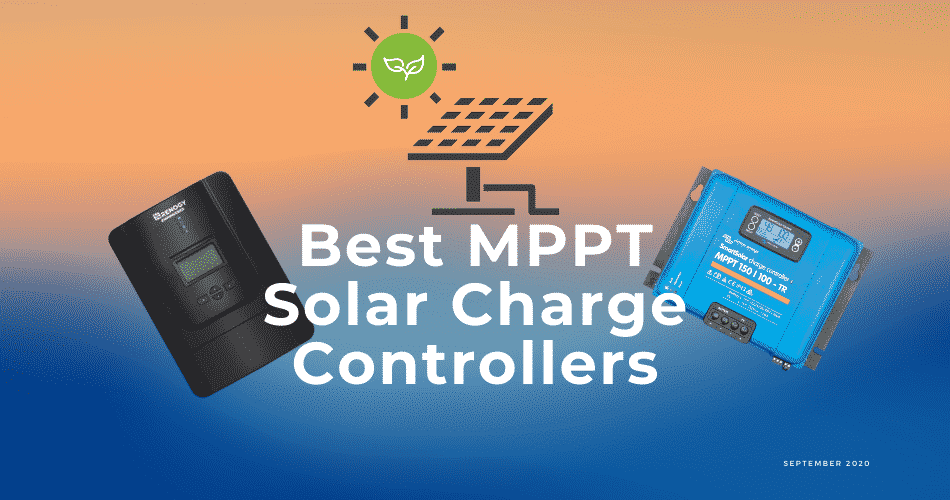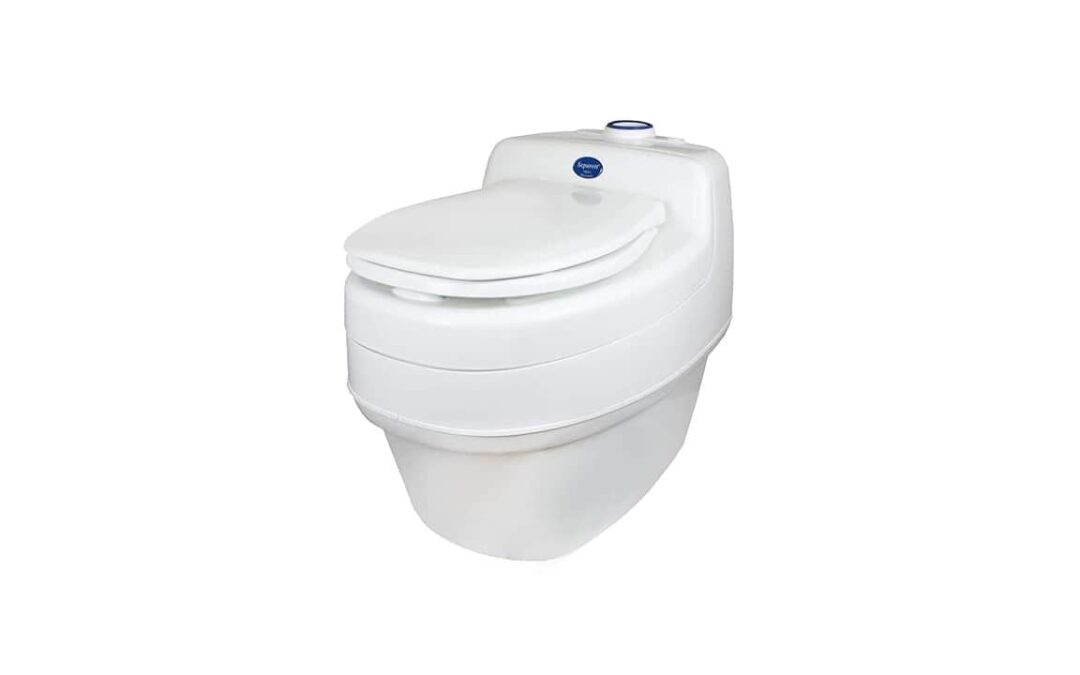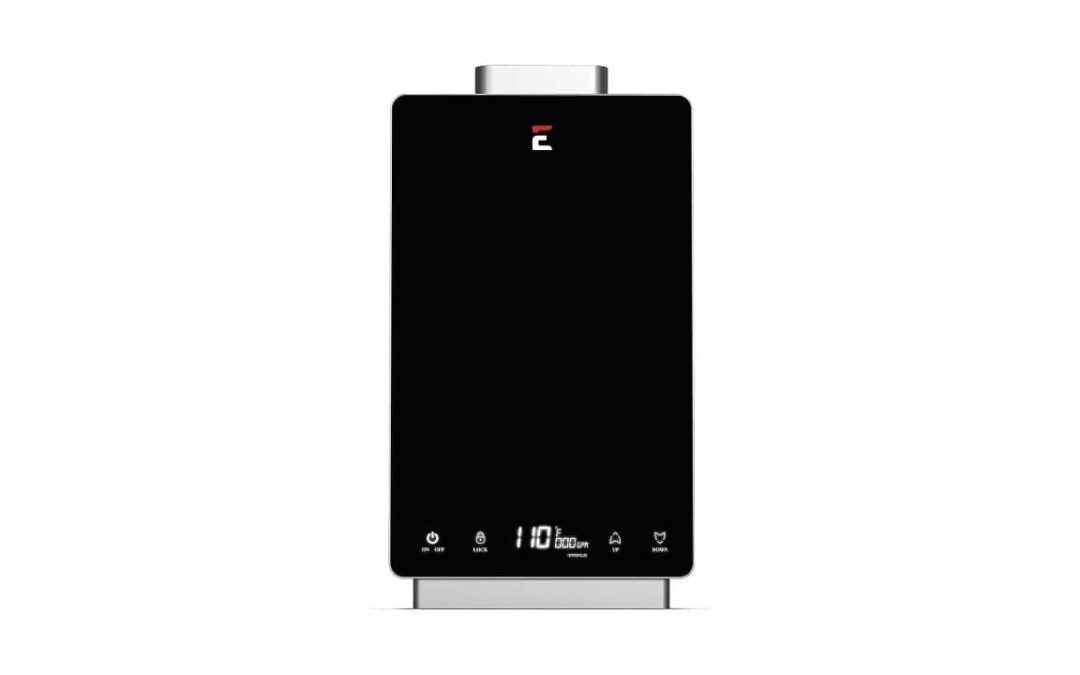One of the most critical components of a solar power system is the charge controller. It’s what takes power produced by your solar panels and feeds it into your battery bank.
Maximum power point tracking (MPPT) charge controllers are the newest, most advanced, and most efficient.
I’ve set up multiple solar systems myself and I say with complete certainty: If you’re building an ultra-efficient tiny house solar system, they’re the only option you should consider.
But which one to choose?
For those who want a quick overview, below is our comparison table:
- Our #1 Rated Best MPPT Solar Charge Controller: Renogy Rover LI 60 Amp (Best Choice For Cabin & Tiny Home Owners)
- Our #2 Rated Best MPPT Solar Charge Controller: Renogy Rover LI 40 Amp (Best for RV & Tiny Home Dwellers)
- Our #3 Rated Best MPPT Solar Charge Controller: Goal Zero Yeti MPPT Solar Charging Optimization Module (Best for Yeti Lithium Solar Generator Owners)
- Our #4 Rated Best MPPT Solar Charge Controller: Victron SmartSolar MPPT 100/50 (Best Runner Up MPPT Charge Controller)








With all the options available, it’s easy to feel overwhelmed and unsure which option is best for your needs.
I researched the top MPPT charge controllers on the market to find the best option for tiny dwellers and those living off-grid.
After reading this article, you will have a clear idea which option to choose.
Let’s get started.
Our #1 Rated Best MPPT Solar Charge Controller: Renogy Rover LI 60 Amp (Best Choice For Cabin & Tiny Home Owners)
- A great size for tiny homes, larger RVs, or off-grid homes with a few appliances
- Capable of supporting up to 800 watts of 12V solar panels
- Designed to work with all modern battery types
- Includes some of the best safety features on the market
- Incredibly easy to install and maintain
The Renogy Rover line of MPPT solar charge controllers is one of the most advanced and user friendly on the market. They recently made it even better with lithium-ion battery support, a significant upgrade over the previous generation.
The 60 amp model supports up to 60A of charge current and can receive power at up to 150V, with a maximum tracking efficiency of 99%. That means you’ll capture the most power possible from your solar panels.
It can process power from up to 800 watts of solar panels at 12V, enough to power a reasonably sized tiny house or off-grid home with enough sun hours. Once you get more massive than this system, you’re starting to get into the high-end stuff at a substantially higher price.
What helps the Renogy Rover series stand out is the detailed instructions, intuitive interface, and range of monitoring options. The Rover LI 60A is one of the easiest to install charge controllers I’ve worked with.
The included manual gives you detailed graphics that take you through every tiny step of the process. It shows you exactly when and how to hook up each connector and the best ways to wire your system. They even have step-by-step videos that can walk you through the basic connection methods:
The optional BT-1 Bluetooth module is an add-on I highly recommend. It allows you to monitor the status and productivity of your panels through Renogy’s convenient app.
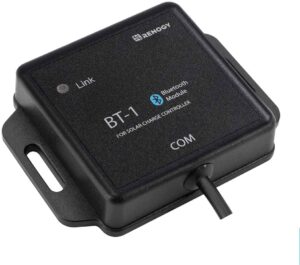
Renogy has a well-deserved reputation for excellence in the solar field. The Rover LI 60A is the perfect size for medium-sized solar installations like tiny homes or off-grid cabins.
Specifications:
- Rated Amps: 60 Amps
- Max Input Voltage: 150V
- Supported Battery Types: Gel, AGM, Flooded, and Lithium
- 12V Panels Supported: 800 Watts
Pros
- A reasonable size for tiny homes, larger RVs, or off-grid homes with a few appliances
- Capable of supporting up to 800 watts of 12V solar panels
- Designed to work with all modern battery types
- Includes some of the best safety features on the market
- Incredibly easy to install and maintain
Cons
- Bluetooth monitoring not included as a standard feature
Our #2 Rated Best MPPT Solar Charge Controller: Renogy Rover LI 40 Amp (Best for RV & Tiny Home Dwellers)
- Cheaper on an amp-by-amp basis than the larger 60A Rover
- Highly efficient, capable of capturing as much as 99% of produced power from your solar panels
- Able to work with 500 watts of solar panels
- Includes high-end safety features
- A good size for medium size solar installations such as a tiny home or RV
The Rover LI 40 Amp is a slightly smaller and substantially less expensive version of our top ranked Rover LI 60 Amp MPPT charge controller. It shares all the features and benefits of its larger cousin, just in a slightly less powerful form.
It’s slightly smaller in every dimension and can accept less power from fewer panels, but otherwise, it is an excellent option. 40 Amps are still enough power to run a high-efficiency tiny home or off-grid cabin, but it won’t give you quite as much flexibility for higher-draw appliances like washing machines.
Basically, if you need the extra power the Rover LI 60A provides you should go with that option, but if you can get by with the 40A version, you’ll get more bang for your buck on an amp-by-amp basis.
Specifications:
- Rated Amps: 40 Amps
- Max Input Voltage: 100V
- Supported Battery Types: Gel, AGM, Flooded, and Lithium
- 12V Panels Supported: 500 Watts
Pros
- Cheaper on an amp-by-amp basis than the larger 60A Rover
- Highly efficient, capable of capturing as much as 99% of produced power from your solar panels
- Able to work with 500 watts of solar panels
- Includes high-end safety features
- A good size for medium size solar installations such as a tiny home or RV
Cons
- Doesn’t have Bluetooth monitoring capability out of the box
Our #3 Rated Best MPPT Solar Charge Controller: Goal Zero Yeti MPPT Solar Charging Optimization Module (Best MPPT Option for Yeti Lithium Solar Generator Owners)

- A huge value-add for high-capacity Yeti solar generators
- Shaves 40% off average charge time from solar
- Increases the total amount of solar input capacity
- Inexpensive compared to the cost of solar generators
Goal Zero makes some of the most highly rated solar generators on the market, including the popular Yeti line. The Yeti MPPT Solar Charging Optimization Module allows you to upgrade the charging capability of your older Yeti X and Yeti Lithium solar generators with 1,000+ watts of capacity.
It takes over for the internal charge controller and can improve charging times by as much as 40% when used with Yeti or third-party solar panels. That’s a massive improvement, especially given the relatively low price of the Optimization Module compared to the solar generator cost.
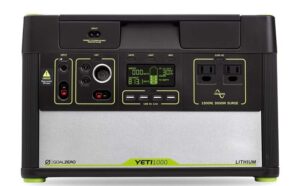
On the Yeti Lithium batteries, it makes a substantial difference in all charging methods, while on the Yeti X, it works to increase the total solar input capability. When you’re talking large batteries like those found on a 1,000 or 1,400-watt solar generator, you can shave hours off the charging time.
There are some evident shortcomings to this MPPT. For one, it only works with a few specific Yeti solar generators. If you’re looking for a more general-purpose MPPT charge controller for a solar system, this isn’t it.
Still, if you’ve already purchased a large-capacity Goal Zero Yeti X or Yeti Lithium solar generator, the Optimization Module can substantially improve its overall efficiency and reduce charge time.
Specifications:
- Rated Amps: 25 Amps
- Charge Time For Yeti Batteries: Goal Zero Yeti 1000 @ Max Input: 3.5 hours – Goal Zero Yeti 1400 @ Max Input: 5 hours – Goal Zero Yeti 3000 @ Max Input (included with Yeti 3000): 10 Hours
- Supported Battery Types: Yeti X and Yeti Lithium Power Stations 1000W and up
- Number of 12V Panels Supported: N/A
Pros
- Shaves 40% off average charge time from solar
- Increases the total amount of solar input capacity
- Inexpensive compared to the cost of solar generators
Cons
- Only works with a few large-capacity Goal Zero solar generators
- Takes the place of a Goal Zero Link Expansion Module
Our #4 Rated Best MPPT Solar Charge Controller: Victron SmartSolar MPPT 100/50 (Best Runner Up MPPT Charge Controller)
- A great size for medium tiny homes and RVs
- Easy to install and maintain
- Built-in Bluetooth connection a significant long term value-add
- Capable of working with all popular battery types
- Advanced Ultra Fast Maximum Power Point Tracking improves performance in cloudy conditions
The Victron SmartSolar MPPT charge controller line are popular solar charge controllers with a lot going for them. They’re compact, easy to install and come in a wide range of capacities.
The 100/50 model is capable of handling 100V of input voltage and 50 total amps. That’s enough power for a reasonable size tiny home or large RV.
It uses Ultra Fast Maximum Power Point Tracking to rapidly monitor your panels’ changing voltage and adapt instantly. It allows you to get 98%+ efficiency, especially under cloudy or rapidly changing light intensity conditions.
The installation and setup process is extremely straightforward, especially given the detailed instructions provided. They even have an easy-to-follow video to help you get started with the settings.
One of the best features of the SmartSolar 100/50 is integral remote monitoring. It has a built-in Bluetooth module that allows you to monitor your system’s status through your smartphone. When paired with an optional LoRaWAN module it can be observed from anywhere in the world.
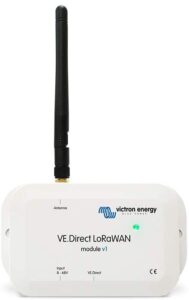
It’s a great charge controller for medium size solar systems but is a bit pricey for its capacity. I still think it’s a good option if you like the slim-line design and built-in remote monitoring systems.
Specifications:
- Rated Amps: 50 Amps
- Max Input Voltage: 100V
- Supported Battery Types: Gel, AGM, Flooded, and Lithium
- Number of 12V Panels Supported: 700 watts at 12V
Pros
- Easy to install and maintain
- Built-in Bluetooth connection a significant long term value-add
- A great size for medium tiny homes and RVs
- Capable of working with all popular battery types
- Advanced Ultra Fast Maximum Power Point Tracking improves performance in cloudy conditions
Cons
- Expensive on an amp-by-amp basis
- Doesn’t have any display on the charge controller itself








What I Looked for in the Best MPPT Solar Charge Controllers
When talking about charge controllers, MPPT models are already at the top of the heap. They’re noticeably more advanced and efficient than older PWM controllers.
To determine the best MPPT charge controllers below, I balanced overall performance with ease of installation, monitoring capability, total capacity, and the system’s predicted longevity.
That last one is critical, as there are tons of no-name ‘brands’ producing charge controllers with little indication of their quality level and few long-term examples of their use.
As a result, I didn’t include these in the list.
Capacity is probably the most important factor considered. To figure out how much charge controller capacity you need, follow this simple metric:
( Size of your solar panels in watts X number of panels ) / voltage.
If you’ve got five 100 watt panels at 12V then you’ll do (100 X 5) / 12 = 41.667 amps.
Efficiency is also essential but shows fewer noticeable differences among the top-ranked offerings.
How Does an MPPT Solar Charge Controller Work?
MPPT, short for Maximum Power Point Tracking, charge controllers are the newest and most advanced charge controller option available for solar power. They track the voltage and amperage produced by your solar panels and use this information to find the most effective charging voltage to use on your batteries.
What helps set them apart from cheaper PWM charge controllers is how rapidly they can change charging voltage. They consider the panels’ voltage, the temperature at the panels and the battery, charging current, and the consistency of power delivery from the panels.
That allows for much more efficient capture of power throughout the day, not only peak sun hours.
Pros and Cons of MPPT Solar Charge Controllers
MPPT charge controllers are noticeably more efficient than the next best option under ideal conditions. An MPPT charge controller can help you capture 10-40% more power from your solar panels than a comparable PWM charge controller.
That’s a lot of power, to be sure, but it does come down to those ideal conditions. In warmer climates or scorching days, the voltage of your solar panels will go down. Lower voltage means less marginal benefit from an MPPT.
There’s also the fact that MPPT charge controllers are noticeably more expensive than PWM ones. Depending on your system’s size and your need for efficiency, it may be more cost-effective to purchase more solar panels to make up for a cheaper PWM charge controller’s efficiency loss.
You can see a great breakdown of the efficiency vs cost tradeoffs of MPPT vs PWM in the video below:
In a tiny home or RV, though, space and total efficiency are critical. MPPT charge controllers allow you to get every bit of power you can out of the limited solar panels you can put out. For that reason, I generally recommend you go MPPT under most circumstances.
Buying Guide
There are several vital factors you should consider when comparing different MPPT charge controllers.
Voltage and Current (Amps) Capacity
The first thing to look at when choosing an MPPT charge controller is its capacity. It needs to be able to handle both the voltage and current from your solar panels.
Most charge controllers can handle a bit more than their rated amperage as a safety measure, but I always recommend you go for a slightly larger controller than you think you need. It’s a good buffer and gives you the option to expand your system down the line if needed.
Battery Compatibility
Not all charge controllers will work with all batteries. It’s especially true as more advanced LiFePo4 lithium batteries have become more prevalent.
Most charge controllers will work just fine with lead acid, gel, and AGM batteries, but always double-check.
The best-case scenario of a miss-matched battery is your charge controller won’t fully charge the battery. In the worst-case, it could permanently damage a costly battery bank.
Safety Features
Anytime you’re working with electricity, safety should be your number one priority. One of the best ways to protect yourself and your batteries is through automatic protections and shutoffs.
Some MPPT charge controllers can automatically shut off the flow of power to the batteries if they detect any issues.
These safety features have the benefit of protecting your batteries, your appliances, and your solar system itself from damage.
Display, Monitoring, and Control Features
One hallmark of value-priced charge controllers is a lack of indicators and displays. Many offer only blinking lights to show problems, without the digital displays that help you monitor voltage, amperage, temperature, etc.
I highly recommend you only consider MPPT charge controllers with effective monitoring available. The very best offer Bluetooth or WiFi monitoring that lets you keep an eye on the conditions of your solar system from anywhere using your smartphone.
Longevity
It can be easy to get wowed by the low price of a value charge controller, but one important consideration when looking at cost is longevity. The market is flooded with cheap charge controllers from a wide range of totally unknown brands, with basically no accountability for performance.
Saving some money upfront is excellent, but you want to make sure that you can rely on your charge controller for the long haul. It’s is especially true given the relatively low absolute cost difference (usually less than $100 difference) between different MPPT charge controllers in the tiny home scale.
Who Needs an MPPT?
MPPT charge controllers are great, but they aren’t necessarily for everyone. Below are groups who should consider paying the slight premium over a PWM charge controller.
When space is at a premium – If there’s one thing Tiny dwellers understand, it’s the value of space. While a multi-thousand-watt solar system sure would be nice, sometimes you have to make do with the 600 watts you can cram onto your roof.
When every inch is essential, you have to squeeze the last drop of power out of your panels. An MPPT controller allows that, giving you the most efficiency possible from your small-scale solar system.
You have an extensive solar system – Where MPPT charge controllers come into their own is in enhancing the productivity of large solar systems. When you’ve got 1,500+ watts of panels, even a 10% difference can be a lot of power, forget the 40% the best MPPT charge controllers can provide.
For larger systems, an MPPT is essential.
You live in a colder climate – MPPT charge controllers work best at lower temperatures. If you live in a hot climate there isn’t nearly as much of a difference in efficiency between MPPT and PWM.
Your batteries and panels are at different voltages – One place where MPPT charge controllers shine is regulating voltage differences. If you’ve got a bank of 6V batteries and are running 12V panels, an MPPT charge controller is a much better solution than a PWM at properly tracking and matching the voltages.
Longer distances between your panels and battery bank – Line loss is one of the biggest downsides to DC power production. If your solar panels are sited more than 50 feet or so away from your batteries, you’ll begin to see a noticeable drop in voltage.
One solution to this is to wire your solar panels in series to boost their voltage. An MPPT charge controller allows you to do this without losing additional amps to the higher voltage.
Final Thoughts
MPPT solar charge controllers are by far the most advanced and efficient charge controllers available to the modern solar enthusiast. They have fundamental advantages over older PWM charge controllers and are the best option for most tiny home, RV, and other off-grid dwellers.
You’ve got plenty of options out there, whether you want the comprehensive quality of the top-ranked Renogy Rover LI 60A or a way to upgrade your existing solar generator with the Goal Zero Yeti Optimization Module.

